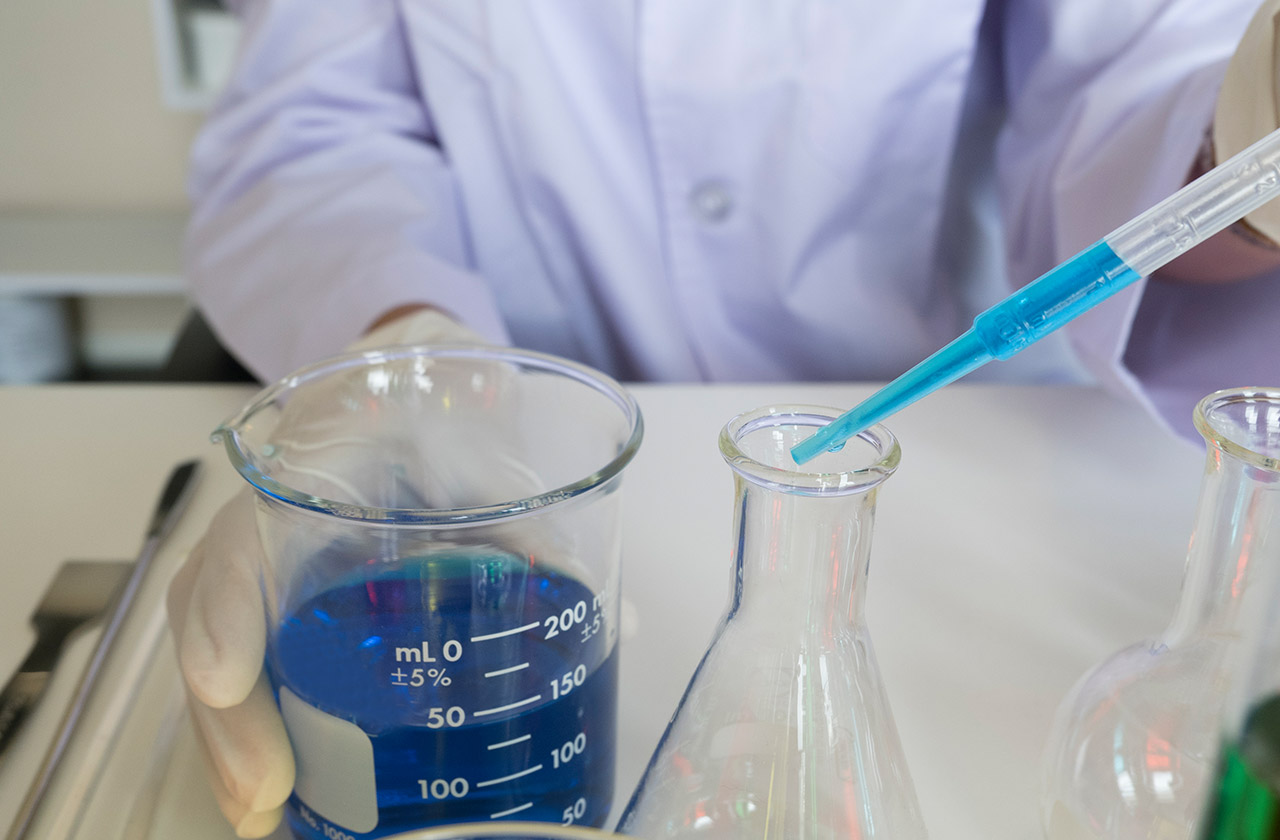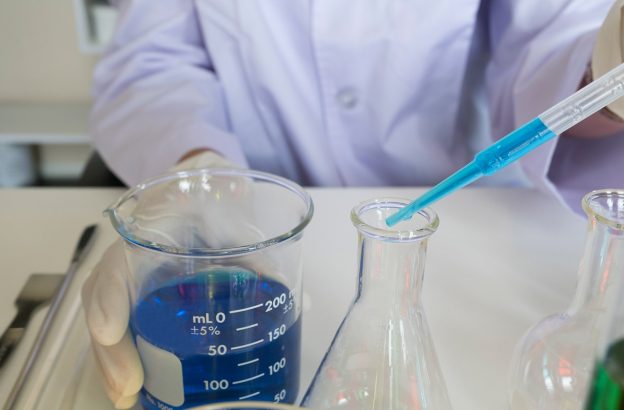The course is a prerequisite for many advanced chemistry classes and is often required for students majoring in chemistry, engineering, and related fields.
Analytical Course Description
- Coulomb’s Law
- Topics
- Electrostatics
- Electric Force
- Force Pairs
- Coulomb’s Law
- Sample Learning Goals
- Relate the electrostatic force magnitude to the charges and the distance between them
- Explain Newton’s third law for electrostatic forces
- Use measurements to determine Coulomb’s constant
- Determine what makes a force attractive or repulsive
- Topics
- Balloons and Static Electricity
- Topics
- Static Electricity
- Electric Charges
- Electric Force
- Sample Learning Goals
- Describe and draw models for common static electricity concepts (transfer of charge, induction, attraction, repulsion, and grounding)
- Make predictions about force at a distance for various configurations of charge
- Topics
- Build an Atom
- Topics
- Atoms
- Atomic Structure
- Isotope Symbols
- Atomic Nuclei
- Sample Learning Goals
- Use the number of protons, neutrons, and electrons to draw a model of the atom, identify the element, and determine the mass and charge.
- Predict how addition or subtraction of a proton, neutron, or electron will change the element, the charge, and the mass.
- Use the element name, mass, and charge to determine the number of protons, neutrons, and electrons.
- Define proton, neutron, electron, atom, and ion.
- Generate an isotopic symbol for an atom, given the number of protons, neutrons, and electrons.
- Topics
- Isotopes and Atomic Mass
- Topics
- Isotopes
- Atomic Mass
- Sample Learning Goals
- Define “isotope” using mass number, atomic number, number of protons, neutrons and electrons.
- Given information about an element, find the mass and name of an isotope.
- Give evidence to support or dispute: “In nature, the chance of finding one isotope of an element is the same for all isotopes.”
- Find the average atomic mass of an element given the abundance and mass of its isotopes.
- Predict how the mass and name of an isotope will change given a change in the number of protons, neutrons or electrons.
- Predict how the average atomic mass of an element changes given a change in the abundance of its isotopes.
- Topics
- Molecule Shapes: Basics
- Topics
- Molecular Geometry
- Bonds
- VSEPR
- Bond angle
- Molecules
- Sample Learning Goals
- Recognize that molecule shape is due to repulsions between atoms.
- Recognize that bonds are not fixed in place, but can rotate around in response to repulsions.
- Topics
- Molecules Shapes
- Topics
- VSEPR
- Lone Pairs
- Bonds
- Bond angle
- Molecules
- Molecular Geometry
- Electron Geometry
- Sample Learning Goals
- Recognize that molecule geometry is due to repulsions between electron groups.
- Recognize the difference between electron and molecular geometry.
- Name molecule and electron geometries for molecules with up to six electron groups surrounding a central atom.
- Compare bond angle predictions from the VSEPR-based model to real molecules.
- Describe how lone pairs affect bond angles in real molecules.
- Topics
- Build a molecule
- Topics
- Molecular Formula
- Molecular Structure
- Isomers
- Molecules
- Sample Learning Goals
- Describe the difference between an atom and a molecule.
- Build simple molecules from atoms.
- Distinguish between the coefficient and subscript in a chemical formula.
- Construct molecules from the chemical formula.
- Associate common molecule names with multiple representations.
- Experiment with combining atoms to build larger molecules.
- Topics
- Molecular Polarity
- Topics
- Polarity
- Electronegativity
- Bonds
- Partial Charge
- Dipole
- Sample Learning Goals
- Predict bond polarity using electronegativity values
- Indicate polarity with a polar arrow or partial charges
- Rank bonds in order of polarity
- Predict molecular polarity using bond polarity and molecular shape
- Topics
- Atomic Interactions
- Topics
- Interaction Potential
- Atomic Bonding
- Van der Waals Force
- Pauli Repulsion
- Lennard-Jones Potential
- Atomic Interactions
- Sample Learning Goals
- Explain how attractive and repulsive forces govern the interaction between atoms.
- Describe the effect of potential well depth on atomic interactions.
- Contrast the potential well of a bonded pair of atoms with unbonded pairs.
- Describe bonds as dynamic and bond lengths as average distances.
- Topics
- States of Matter: Basics
- Topics
- Atoms
- Molecules
- States of Matter
- Sample Learning Goals
- Describe characteristics of three states of matter: solid, liquid and gas.
- Predict how varying the temperature or pressure changes the behavior of particles.
- Compare particles in the three different phases.
- Explain freezing and melting with molecular level detail.
- Recognize that different substances have different properties, including melting, freezing and boiling temperatures.
- Topics
- States of Matter
- Topics
- Atomic Bonding
- Interaction Potential
- States of Matter
- Dipole
- Sample Learning Goals
- Describe a molecular model for solids, liquids, and gases.
- Extend this model to phase changes.
- Describe how heating or cooling changes the behavior of the molecules.
- Describe how changing the volume can affect temperature, pressure, and state.
- Relate a pressure-temperature diagram to the behavior of molecules.
- Interpret graphs of interatomic potential.
- Describe how forces on atoms relate to the interaction potential.
- Describe the physical meaning of the parameters in the Lennard-Jones potential, and how this relates to the molecule behavior.
- Topics
- Density
- Topics
- Density
- Mass
- Volume
- Archimedes’ Principle
- Sample Learning Goals
- Describe how the concept of density relates to an object’s mass and volume.
- Explain how objects of similar mass can have differing volume, and how objects of similar volume can have differing mass.
- Explain why changing an object’s mass or volume does not affect its density (ie, understand density as an intensive property).
- Measure the volume of an object by observing the amount of fluid it displaces.
- Identify an unknown material by calculating its density and comparing to a table of known densities.
- Topics
- Diffusion
- Topics
- Gas
- Diffusion
- Thermodynamics
- Sample Learning Goals
- Explain how two gases mix.
- Design an experiment to find the factors which affect the rate of diffusion.
- Topics
- Gases_Introduction
- Topics
- Ideal Gas Law
- Pressure
- Volume
- Temperature
- Sample Learning Goals
- Describe the behavior of the gas particles in the box.
- Identify the relationship between pressure, volume, temperature, and number of gas molecules.
- Describe the relationship between particle-wall collisions and pressure.
- Predict how changing temperature will affect the speed of molecules.
- Topics
- Gases
- Topics
- Ideal Gas Law
- Kinetic Molecular Theory
- Diffusion
- PV Work
- Maxwell-Boltzmann Distribution
- Sample Learning Goals
- Determine how changing a variable among P, V, N, and T influences other gas properties.
- Describe the relationship between particle-wall collisions and pressure.
- Predict how changing temperature will affect the speed of molecules.
- Predict the speed of molecules in thermal equilibrium based on the relative masses of molecules.
- Identify when pressure-volume work is done on or by a gas.
- Explain how two gases mix.
- Design an experiment to find the factors which affect the rate of diffusion.
- Topics
- Energy Forms and Changes
- Topics
- Conservation of Energy
- Energy Systems
- Energy Transfer
- Energy Conversion
- Heat Conduction
- Sample Learning Goals
- Predict how energy will flow when objects are heated or cooled, or for objects in contact that have different temperatures.
- Describe the different types of energy and give examples from everyday life.
- Describe how energy can change from one form of energy into another.
- Explain conservation of energy in real-life systems.
- Design a system with energy sources, changers, and users and describe how energy flows and changes one form of energy into another.
- Tell the energy story for real-life systems.
- Topics
- Molecules and Light
- Topics
- Molecules
- Photons
- Absorption
- Light
- Sample Learning Goals
- Explore how light interacts with molecules in our atmosphere
- Identify that absorption of light depends on the molecule and the type of light
- Relate the energy of the light to the resulting motion
- Identify that energy increases from microwave to ultraviolet
- Predict the motion of a molecule based on the type of light it absorbs
- Identify how the structure of a molecule affects how it interacts with light
- Topics
- Molarity
- Topics
- Solutions
- Molarity
- Moles
- Volume
- Solubility
- Saturation
- Sample Learning Goals
- Describe the relationships between volume and amount of solute to concentration.
- Explain how solution color and concentration are related.
- Calculate the concentration of solutions in units of molarity (mol/L).
- Use molarity to calculate the dilution of solutions.
- Compare solubility limits between solutes.
- Topics
- Concentration
- Topics
- Solutions
- Concentration
- Saturation
- Molarity
- Moles
- Volume
- Solubility
- Sample Learning Goals
- Describe the relationships between volume and amount of solute to solution concentration.
- Explain how solution color and concentration are related.
- Predict how solution concentration will change for any action (or combination of actions) that adds or removes water, solute, or solution, and explain why.
- Design a procedure for creating a solution of a given concentration.
- Design and justify a procedure for changing a solution from one concentration to another.
- Identify when a solution is saturated and predict how concentration will change for any action or combination of actions where water or solute change.
- Topics
- Beer’s Law Lab
- Topics
- Beer’s law
- Solutions
- Concentration
- Molarity
- Light
- Absorbance
- Transmittance
- Spectrophotometry
- Sample Learning Goals
- Describe the relationships between volume and amount of solute to solution concentration
- Explain qualitatively the relationship between solution color and concentration
- Predict and explain how solution concentration will change for adding or removing: water, solute, and/or solution
- Calculate the concentration of solutions in units of molarity (mol/L)
- Design a procedure for creating a solution of a given concentration
- Identify when a solution is saturated and predict how concentration will change for adding or removing: water, solute, and/or solution
- Describe the relationship between the solution concentration and the intensity of light that is absorbed/transmitted
- Describe the relationship between absorbance, molar absorptivity, path length, and concentration in Beer’s Law
- Predict how the intensity of light absorbed/transmitted will change with changes in solution type, solution concentration, container width, or light source, and explain why
- Topics
- Acid-Base Solutions
- Topics
- Acids
- Bases
- Equilibrium
- Dissociation
- Solutions
- Sample Learning Goals
- Given acids or bases at the same concentration, demonstrate understanding of acid and base strength by: 1.Relating the strength of an acid or base to the extent to which it dissociates in water 2.Identifying all of the molecules and ions that are present in a given acid or base solution. 3.Comparing the relative concentrations of molecules and ions in weak versus strong acid (or base) solutions. 4.Describing the similarities and differences between strong acids and weak acids or strong bases and weak bases.
- Demonstrate understanding of solution concentration by: 1.Describing the similarities and differences between concentrated and dilute solutions. 2.Comparing the concentrations of all molecules and ions in concentrated versus dilute solutions of a particular acid or base.
- Use both the strength of the acid or base and the concentration of its solution in order to: 1.Describe in words and pictures (graphs or molecular drawings) what it means if you have a: Concentrated solution of a weak acid (or base) or Concentrated solution of a strong acid (or base) or other combinations. 2.Investigate different combinations of strength/concentrations that result in same pH values.
- Describe how common tools (pH meter, conductivity, pH paper) help identify whether a solution is an acid or base and strong or weak and concentrated or dilute.
- Topics
- pH Scale: Basics
- Topics
- pH
- Acids
- Bases
- Dilution
- Sample Learning Goals
- Determine if a solution is acidic, basic or neutral
- Place acids or bases in order of relative acidity or basicity
- Relate liquid color to pH
- Predict how solution volume or dilution with water will affect the pH of acids or bases
- Topics
- pH Scale
- Topics
- pH
- Dilution
- Concentration
- Acids
- Bases
- Sample Learning Goals
- Determine if a liquid is acidic, basic, or neutral
- Place acids or bases in relative order
- Describe on a molecular scale, with illustrations, how the water equilibrium varies with pH
- Determine concentration of hydroxide, hydronium and water at a given pH
- Relate liquid color to pH
- Predict (qualitatively and quantitatively) how dilution and volume will affect the pH and concentration of hydroxide, hydronium and water
- Topics
- Balancing Chemical Equations
- Topics
- Chemical Equations
- Conservation of Mass
- Sample Learning Goals
- Balance a chemical equation.
- Recognize that the number of atoms of each element is conserved in a chemical reaction.
- Describe the difference between coefficients and subscripts in a chemical equation.
- Translate from symbolic to molecular representations of matter.
- Topics
- Reactants, Products and Leftovers
- Topics
- Chemical Reactions
- Limiting Reactants
- Sample Learning Goals
- Recognize that atoms are conserved during a chemical reaction.
- Use concrete everyday experiences (such as making sandwiches) to describe the what a limiting reactant means in chemical reactions.
- Identify the limiting reactant in a chemical reaction.
- Predict the products and leftovers after reaction, based on the quantities of reactants and ratios of molecules in the balanced chemical equation.
- Predict the initial amounts of reactants given the amount of products and leftovers using the concept of limiting reactant.
- Translate from symbolic (chemical formula) to molecular (pictorial) representations of matter.
- Topics
Course Content
About Instructor

Login
Accessing this course requires a login. Please enter your credentials below!

